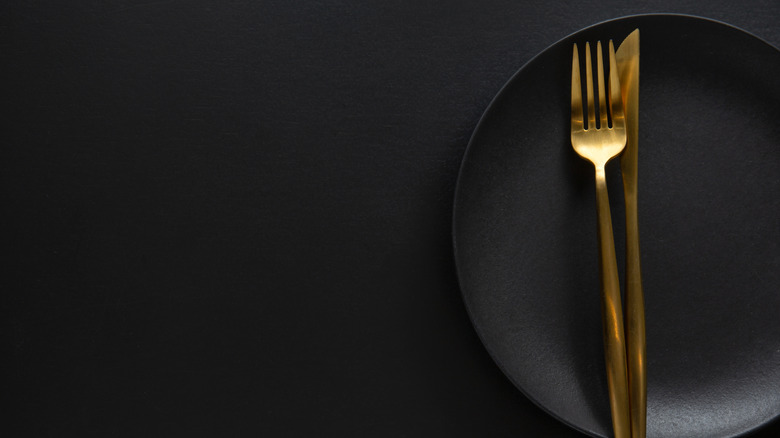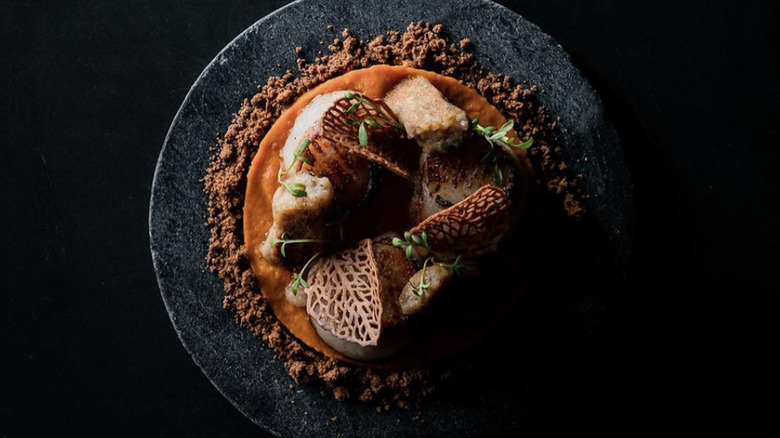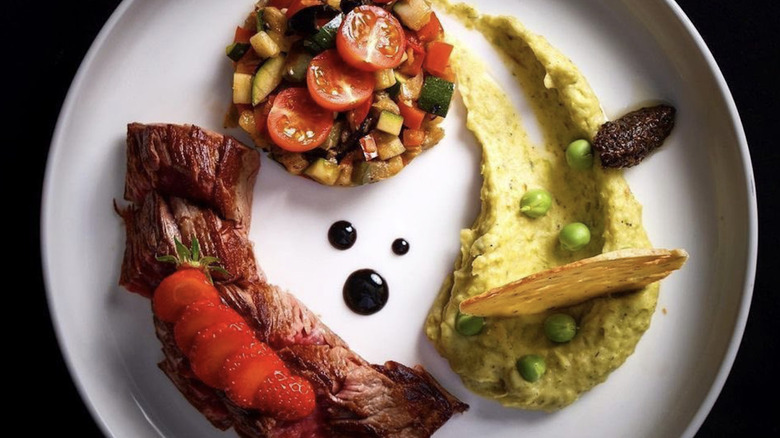Dans Le Noir: The Curious Restaurant That Leaves Diners In The Dark
At a time when diners take photos at fancy restaurants before tasting their food, eating in complete darkness seems like an act of rebellion. But at Dans Le Noir, the dining experience is meant to highlight senses we too often take for granted and bring guests face-to-face with their internal dialogues.
Admittedly, fine dining doesn't always prompt deep questions and meaningful conversations, yet this is the goal at Dans le Noir. Founded in 2004 by Edouard de Broglie, the concept has branched across the globe with restaurants in New Zealand, Egypt, Russia, Spain, and London.
Dark dinners have been around since the mid-nineteenth century as a way to build empathy for those lacking the gift of sight. Blind clergyman Jorge Spielmann began blindfolding dinner guests to mimic his personal experiences before opening Zurich's Blindekuh in 1999, a restaurant that was the first to employ visually-impaired staff. In the absence of visual stimuli, guests are dependent on the hosts. Instead of a fractured experience, however, diners discover something more enriching than beautifully plated dishes (though these are still served). This culinary experience isn't just about the food — it's also an experiment.
A social experiment
When Dans le Noir began, the idea was to create a heightened gastronomic experience while simultaneously building awareness of visual disabilities. The serving and guiding staff are themselves visually impaired, and power dynamics change as diners' trust is handed over to those in charge of the evening.
While guests will be seated with other members of their party, other unknown diners may be close by. Without visual social clues and typical dining etiquette norms, guests must rely on voice, tone, and words to learn more about those present. Some diners prefer to remain silent throughout the experience, while others have found comfort in the ability to participate without any pressures and judgment based on appearance. In this way, the restaurant suggests the experience can be enjoyed by first-time daters, people who have met online, or business colleagues looking for unique team-building activities. The dark experience can be enlightening, and diners are advised to participate with an open mind.
An invitation for the senses
"We often think that when someone loses sight the rest of the senses become more acute. But not all of them do it equally or in the same way because, rather than improve and appear more precise, they magnify," Adrià Subirana, Director of the Barcelona location, told Horse Magazine. As the restaurant explains, dining in the darkness helps diners reassess the experience of eating. Cell phones, watches, and other accessories that might bring traces of light into the space are placed in lockers. The restaurant advises that, while it is natural to move more cautiously in the dark, spills may happen, so prized outfits are best left at home.
Though guests can't see the offered dishes, meals are made by chefs who strive to highlight textures, flavors, and smells. Menu variations are found among the locations; for example, in Madrid, dishes are served with different flavor fusions than in Barcelona, but several set menus are offered — starting at 40€ ($42) for two courses to a 66€ ($69) tasting menu with wine. At the end of the experience, visitors are shown photos of dishes served throughout the evening.
Plan on spending around two hours at the location, but you may want more time to analyze your dining experience through the lens of a researcher instead of a mere restaurant guest.


